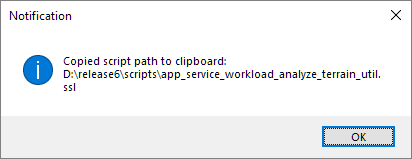Insert the following class declaration into the document, directly below the import statements.
Copy Text To Clipboard
///////////////////////////////////////////////////////////////////////////////
// class
///////////////////////////////////////////////////////////////////////////////
class BuildInputs
{
Model3D m_oModel;
Render3D m_oDevice;
RenderInfo m_oRenderInfo;
int m_eMinGlslVersion;
FileNode m_oData;
string m_sBuildFolder;
StrList m_slMessages;
auto FilePath m_oModelPath;
auto FilePath m_oSourcePath;
auto Int32Vector m_oLens;
int m_iArraySlices;
int m_iMaxBatchSize;
auto GdalImageInfo m_oGdalImageInfo;
auto GdalDataSet m_oGdalDataset;
auto Int32Vector m_viDstRange;
auto Int32Vector m_viMapInfo;
int m_nScaleFactor;
double m_dSpacingX;
double m_dSpacingY;
double m_dRangeX;
double m_dRangeY;
double m_dChunkRangeX;
double m_dChunkRangeY;
auto Float32Array m_afMinMaxElevation;
auto Float32Array m_afMinMaxNormals;
auto FilePath m_oArraysPath;
auto FilePath m_oMapsPath;
auto FilePath m_oAnalysisPath;
auto FilePath m_oImagesPath;
string m_sElevationMapFilePath;
string m_sAspectMapFilePath;
string m_sSlopeMapFilePath;
string m_sOpennessMapFilePath;
};
This class has a variety of data members that are used to store data created during service execution. Note that there is a mix of
plain old data such as ints and doubles, and objects declared with and without auto. The first important thing to know is
that all object data members are pointers, whether they are declared with auto or not. For a C++ programmer, this means
that the data member Model3D m_oModel; is equivalent to Model3D * m_oModel = nullptr;. The declaration
auto GdalImageInfo m_oGdalImageInfo; is equivalent to the C++ GdalImageInfo m_oGdalImageInfo;, where you would expect m_oGdalImageInfo to
be a live object you can use.
You cannot initialize class members in the class itself. You must first instantiate the class and then you can initialize data members
as needed. By default, class members that are plain old data will be zero initialized or initialized to empty, object class members declared without auto
will be nullptr initialized, and object class members declared with auto will be initialized to the constructor defaults
implemented by the underlying C++ code.
This can seem limiting, but in practice, it works really well. It's worth mentioning that you can use Simdify Scripting Language
functions to initialize objects, and if you want to have a custom 'constructor', you could write that function in this library.
Like in C++, when an instance of a class goes out of scope, the destructors of its data members are executed. This means you can use RAII
techniques when you write Simdify Scripting Language code, which is very convenient.



